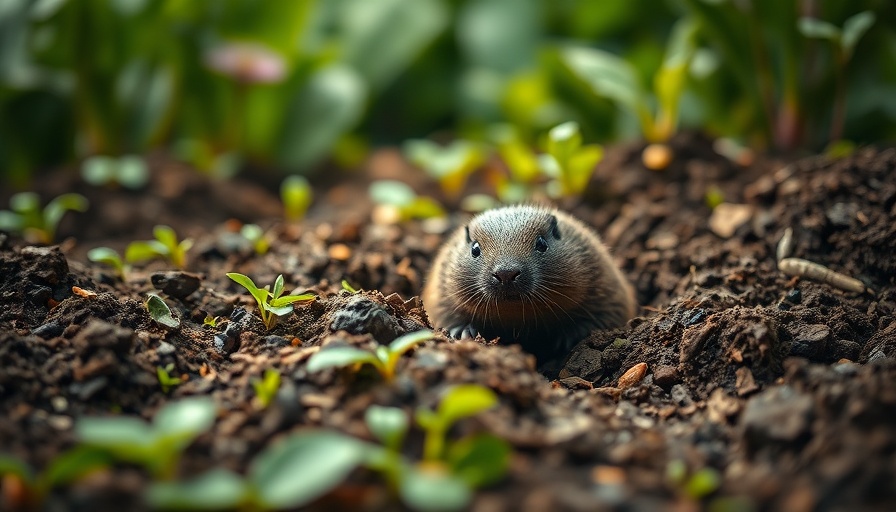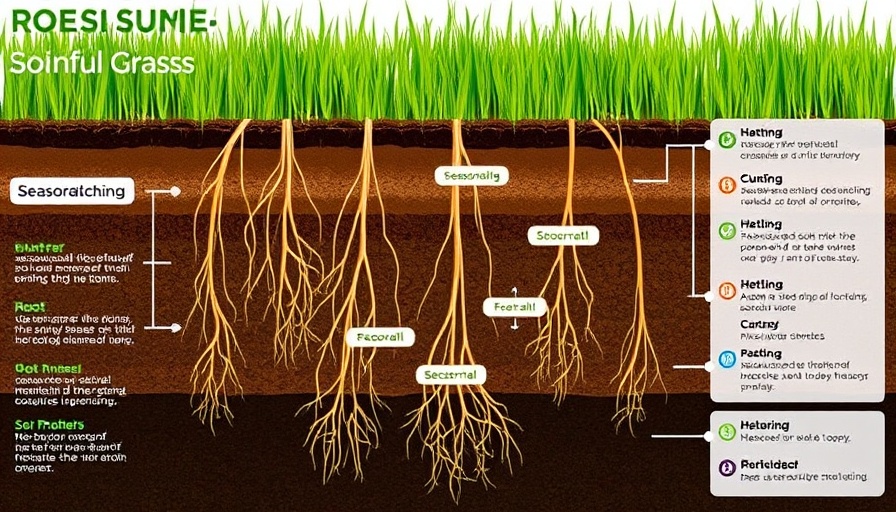
Understanding Moles: Nature’s Garden Engineers
Moles, the small yet busy mammals of our yards, are often misunderstood. Despite their reputation as pests capable of turning a pristine lawn into a burrowed mess, these creatures offer ecological benefits that shouldn't be overlooked. Essential players in pest control, moles consume vast amounts of harmful pests like grubs and insects, making them an unexpected ally for gardeners.
Key Indicators of Mole Activity You Shouldn't Ignore
As moles burrow in search of food, they leave distinctive signs that are mostly inconspicuous to the untrained eye. Here are some indicators to watch for:
- Volcano-Like Molehills: Perhaps the most recognizable sign, these dirt mounds can seem alarming. Moles push the soil to the surface, creating conical formations without visible entrance holes. It's their way of indicating that they are hard at work below.
- Raised Ridges Across Your Lawn: Look for trails of soil that indicate the presence of shallow tunnels. These ridges, about 3 inches wide and a few inches high, form as moles dig and can often hint at the network of tunnels they've created.
- Dying Grass Patches: In some cases, areas where the grass is discolored or dying could be attributed to mole activity, as their tunneling disrupts the root systems.
- Loose Soil: Feel for soft areas beneath the turf, which could signal the presence of tunnels that compromise the stability of your lawn.
- Increased Weed Growth: As moles mine the earth, they can inadvertently create space for weed seeds to grow, turning those beautifully manicured lawns into unwelcome landscapes.
Counterarguments: Why Moles Might Not Be Your Enemy
While moles can be seen solely as pests, it’s pivotal to consider their ecological role. By aerating the soil, they help improve drainage and promote root growth. Many gardeners fail to appreciate the balance of nature and might rush to eradicate moles without understanding their environmental benefits.
The Lives of Moles: More Than Just Garden Menaces
Understanding the natural history and behavior of moles can provide context to their actions in the landscape. Moles are solitary animals that spend most of their lives underground. Their unique anatomical features, such as specialized limbs for digging, allow them to excavate elaborate tunnel systems, which can stretch up to 150 feet in a single day. Their primary diet consists of insects and worms, and moles digest a staggering number of them to meet their energetic needs.
Future of Lawn Care: Rethinking the Role of Moles
As environmental awareness grows, the future of lawn care practices will likely embrace more sustainable and natural pest control methods. Moles, often vilified for their destructive behavior, may find a more blended role where their tunneling is viewed as a natural soil enhancement rather than mere sacrifice of aesthetics. Homeowners could opt for integrated pest management approaches that respect the contributions of these tunneling creatures.
Practical Insights: Enhancing Your Lawn’s Ecology
Instead of immediately reaching for traps or pesticides, consider adopting an ecological mindset. Here are a few actionable insights:
- Monitor the signs of moles and, if necessary, engage in non-lethal deterrent methods.
- Introduce or preserve natural predators like owls and hawks, which can help control mole populations without killing them.
- Create a healthy soil environment with beneficial microorganisms that can thrive alongside some of the moles' activities.
 Add Row
Add Row  Add
Add 


 Add Row
Add Row  Add
Add 

Write A Comment